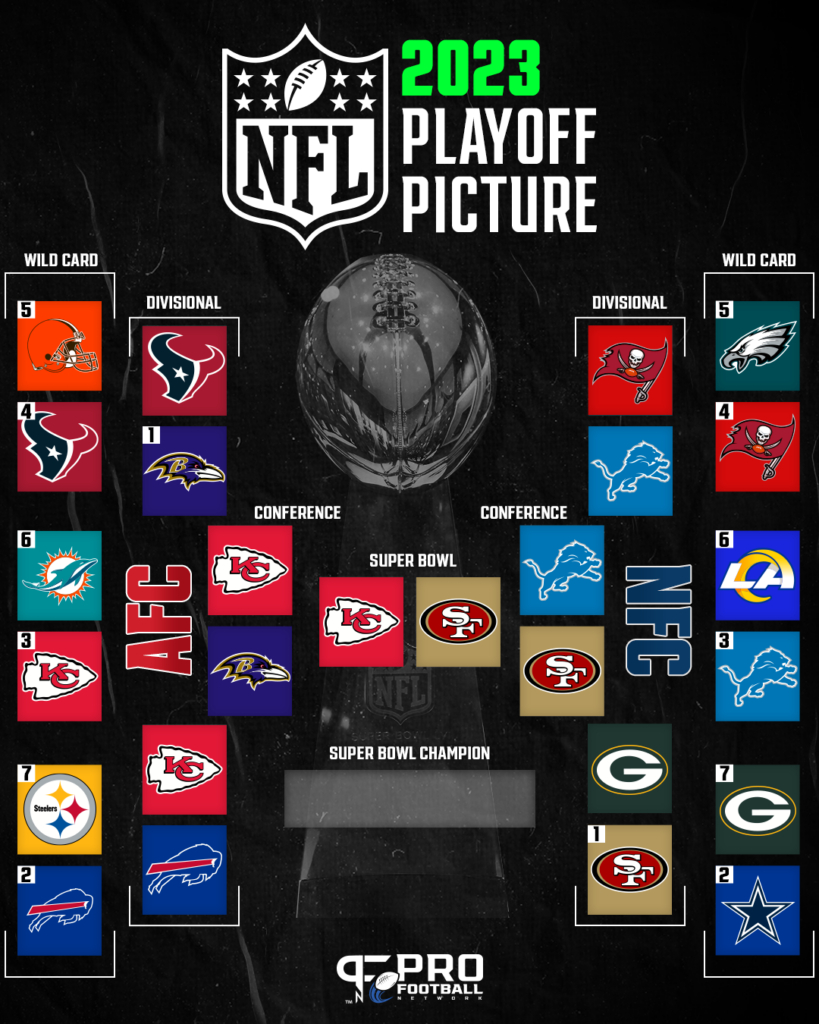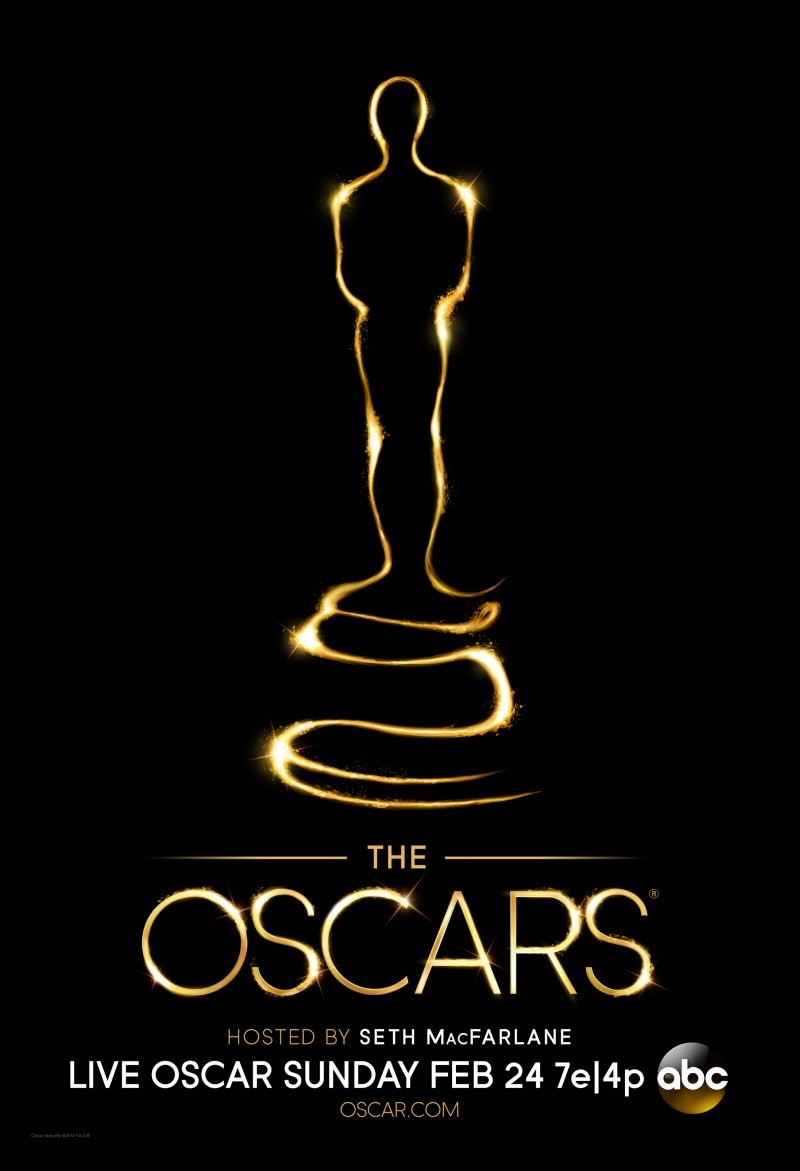
Several Bearing News staff members have pulled their heads together, and compiled this list of predictions for 2013’s Oscar winners. We’re by no means experts, but we hope readers will appreciate and enjoy our analysis of this year’s cinematic experiences.
[/tab][tab title=”Best Visual Effects”] [heading style=”1″]Best Visual Effects[/heading]

Visual effects are supposed to be beautiful and powerful. According to the official Academy Award rules, a movie’s visual effects must be artfully crafted and must contribute heavily to the overall production before it can be considered for the award.
This year, the nominees are The Hobbit: An Unexpected Journey, Life of Pi, The Avengers, Prometheus and Snow White and the Huntsman. Each one of the films presents a hefty fight for the Oscar.
The Hobbit: An Unexpected Journey is a force to be reckoned with. Between collapsing goblin-built bridges, super-speedy rabbits and trolls turning to stone, the fantasy world of Middle Earth has plenty of special effects to spare. Despite already being a fantastic story by J.R.R Tolkien, The Hobbit’s animation techniques and cinemagraphic creativity are what keep the 169 minute runtime engaging. Plus Andy Serkis as Gollum. I can’t brag on Andy Serkis enough.

I haven’t seen Prometheus, but I’ve watched the trailer multiple times, and I’ve heard from many viewers that the movie is eerie with its visuals. The creators built an entire planet through effects, crafted alien technology with holographics, and generally blew audience’s minds. Some of the shots took two or more weeks to render, according to an interview with Richard Stammers, visual effects supervisor for the film. That’s pure dedication.
Snow White and the Huntsman, while lacking a truly substantial plot, does bring a few good effects to the board. With moving trees, creatures made of mist and the infamous “Wicked Witch,” the movie deserves its place on the nominee list. But the chances of it winning are slim. There is nothing impressive about the effects – they’re pretty, but that’s about it. They’re simply eye candy.
Life of Pi is the clincher. This masterpiece, based on the book by Yann Martel, is plain and simply gorgeous. The story is of a young boy stuck on a lifeboat with several zoo animals, and if that isn’t fantastic enough, you should see some of Ang Lee’s visual creations. The ocean is like its very own character, the animals are breathtakingly realistic, and the use of color in every single effect is beautiful.
So my pick for the Oscar winner? Life of Pi takes the title, with the possibility of The Hobbit: An Unexpected Journey sneaking in and snagging the award.
By Lauren Puckett
[/tab][tab title=”Best Animated Feature”] [heading style=”1″]Best Animated Feature[/heading]

According to the Academy Award rules, entries must be more than 40 minutes long and have at least 75 percent of the running time in animation. Furthermore, a significant portion of the main characters must be animated. Movement and characters’ performances must be created using a frame-by-frame technique – motion capture by itself is not an animation technique. Therefore, movies such as Avatar may not qualify, as well as movies that rely more heavily on special effects.
The nominees for this year’s Best Animated Feature are Brave, Wreck-It Ralph, Frankenweenie, ParaNorman and The Pirates! Band of Misfits. Of these movies, I have seen Brave and Wreck-It Ralph, but I am familiar with all of them.
In general, I am not a fan of Tim Burton’s work, as it is grim, rife with gallows humor. While a fitting Halloween feature, Frankenweenie does not strike me as “movie of the year” material. I have the utmost respect for Burton’s work, but the mix of touching emotion, in Sparky’s reanimation by his loving owner (a novel idea, to Burton’s credit), and the stench of death is one that does not sit well nor deliver.
The Pirates! Band of Misfits falls flat. The claymation style is an intriguing medium, reminiscent of Wallace and Gromit (a beloved childhood show of mine), but the movie is too eclectic and seemingly random. The movie strikes me as a great film for elementary school children but too off-the-wall otherwise.
ParaNorman is an excellent film with a captivating plot and clean-cut animation style. It makes for a fantastic animated children’s thriller, in that it is both light-hearted and serious without being morbid. I applaud the movie for focusing on the issue of acceptance, and of the nominees I did not see, I regret missing this gem.
Both Brave and Wreck-It Ralph are truly fantastic movies. Brave is lacking in plot and script but makes up for it with breathtaking animation and art, alongside musical delicacies. The movie is a spectacular showing of Scottish accents and an intense yet beautiful culture. Brave has its main weakness in its driving story, which seems to pass too quickly without gaining momentum. Regardless, the plot still had a nice climax and was, in general, enjoyable to watch unfold.
Similarly, Wreck-It Ralph was quite a treat to watch. The film exhibited both 8-bit graphics and standard animation. The storytelling was amazing, as was the accompanying music. This movie left me wanting for more; indeed, my only complaint is that the movie was too short and that the directors should have explored more of the fully-fleshed out universe. However, while short, the movie’s multilayered and complex plot felt complete, while Brave was just short in general.
Final verdict? Wreck-It Ralph is a winner that should come out on top, but I wouldn’t be surprised if ParaNorman or even Frankenweenie came out on top. However, Wreck-It Ralph by far deserves the Oscar.
By Atreyo Ghosh
[/tab][tab title=”Best Adapted/Original Screenplay”] [heading style=”1″]Best Adapted/Original Screenplay[/heading]

The main thing that separates the two accolades is the presence or the lack of pre-existing source material for the nominated films. There are a few slight additional differences between the two, with Original Screenplay being judged in part by, surprisingly, the originality of the script and Adapted Screenplay evaluated for how true they are to their source or how well they evolve the original story. Essentially, however, both awards are given to the films whose scripts have the tightest written stories, snappiest dialogue, and the least bad one-liners. Sorry, Michael Bay.
In the past decade, it hasn’t been unusual to see the awards for Best Screenplay and Best Picture go home together; The King’s Speech won for both Original Screenplay and the coveted Best Picture, and Slumdog Millionaire was awarded Best Picture of 2009 in addition to its Adapted Screenplay win. This isn’t always the case, of course; last year Woody Allen’s Midnight in Paris deservedly took home the Oscar for Original Screenplay over that year’s Best Picture winner The Artist, which was also nominated for Best Screenplay. To be fair, though, I think the Academy would be hard pressed to justify The Artist winning a screenplay-related award, given the whole, you know, completely-silent-next-to-zero-lines-of-dialogue thing.
This year, there’s going to be some interesting competition for both screenplay awards. The nominees for Best Adapted Screenplay are Life of Pi, Argo, Beasts of the Southern Wild, Lincoln, and Silver Linings Playbook. Out of those two, I have to say that Pi and Lincoln both seem like good films with a decent script that lack truly great dialogue or plot development. They’re the sort of the movies the Academy is already gushing over due to cinematography and acting and having heartwarming messages, so they get thrown in with other nominees for categories that don’t necessarily fit their best attributes.
The remaining three, however, are the definite frontrunners for Adapted Screenplay, and it’s gonna be a fierce race between the dry wit and clever storytelling of Silver Linings Playbook, the amazingly accurate retelling of true events that permeates Argo and Southern Wild’s beautiful dialogue and uniquely touching story. They’re all very different films with very different scripts, and at this point it’s really anyone’s guess which one will take home the gold.
Original Screenplay nominees also boast a diverse selection of scripts written in very different styles. The screenplays nominated run the gamut from the bittersweet foreign language romantic tragedy Amour to the profane and darkly humorous script of Quentin Tarantino’s Django Unchained. Ironically, these radically different films, seated at exact opposite ends of the spectrum, are the two likeliest candidates for winning the Original Screenplay golden statue. Amour, on the one hand tells the story of an aging couple that weaves between the heartwarming and the heartrending and never fails to miss an emotional beat, but Django is the most quotable movie of 2012 and is a perfect example of Tarantino’s ability to transform casual conversations into comedic masterpieces.The race for Original and Adapted Screenplay this year is going to be far more heated than it has been in a while, with no clear winner for either category. The only sure thing is that no matter what the outcome, the Academy has an exceptional array of scripts to choose from.
By Jake Alden
[/tab][tab title=”Best Film Score”]
[heading style=”1″]Best Film Score[/heading]
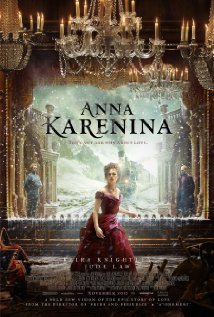
Although my vote goes to Marianelli, Desplat from Argo comes in a close second. I could hear the sound of Arabian sorrow and tense destruction in the music. All the songs had a very native Iranian feel, and the whole score includes pieces with powerful contrast, creepy edges, and melodious piano melodies.
Mychael Danna’s work for Life of Pi, although not my favorite of all the nominations, still seemed to fit the atmosphere of the movie. The film score was traditional Indian sounding at most times. Other lovely Parisian textures with classic accordion were mixed in with an Indian sitar, and at times I felt it was a bit confusing. The music shined through the film as you could felt the rawness of both heavenly emotions and pure tragedy.
As always, John Williams never fails to set the mood. His work in Lincoln was very patriotic sounding, but I have to say, it wasn’t awe-inducingly terrific. While the score complimented the film, I wouldn’t go as so far to say that it did more than just that. A lot of the music seemed a filler, and not so much as impactful as it could have been. As far as fitting the movie, the film music succeeded, but as far as going beyond and creating something more than just aiding the movie, I think it could have been better.
Finally, I wasn’t too impressed with Thomas Newton’s compositions for Skyfall. The scored seemed too typical “James Bond” sounding, and seemed almost too familiar. While the dissonance and driving beat stirs tense emotions, the music didn’t prove to be something I’ve felt as though I’ve never heard before. Like all good action films, there’s a tremendous build to the climax of the music and scene in unison. Regardless, I felt the music of Skyfall was a little too generic.
All in all, I wouldn’t be surprised if any of the nominees will win the Oscar. All five composers created music beyond the realm of just simple melodies in the background of a film. As to which composer I think truly deserves the Oscar, it goes to Marianelli.
By Julia Schaller
[/tab][tab title=”Best Original Song”] [heading style=”1″]Best Original Song[/heading] This year’s Oscar nominees for best original song were terrifically chosen. The nominees are: J.Ralph for “Before My Time” from Chasing Ice, Walter Murphy and Seth MacFarlane for “Everybody Needs A Best Friend” from Ted, Mychael Danna and Bombay Jayashri for “Pi’s Lullaby” from Life of Pi, Adele Adkins and Paul Epworth for “Skyfall” from Skyfall, and Claude-Michel Schonberg, Herbert Kretzmer and Alain Boubil for “Suddenly” from Les Miserables.

I was second most impressed with “Suddenly”. Although I was a bit apprehensive at first to hear the new addition to the song set of Les Miserables, I was happily reassured after listening to the song that it wouldn’t ruin the flow of the movie. This original song sounded like it fit right in and seemed almost as if it had been there the whole time; like it was written at the time of all the original pieces. I was terribly impressed.
The song “Before My Time” is gorgeously written, but for some reason didn’t seem to “do it” for me. While this song was most likely written to evoke the depression of global warming and the melting of the world’s exquisite glaciers, and succeeded to do so, this original song sounded almost too much like a sappy romance song.
While I adore Norah Jones, the one who sang “Everybody Needs A Best Friend”, I’m not confident the original song was just right for the movie Ted. The song is quirky and jazzy and, don’t get me wrong, goes well with the theme for this comedy, but I wonder if it’s almost too childish for the film.
Finally, “Pi’s Lullaby” sounded very similar to the rest of the film score. While the song was beautifully written, I wouldn’t say it outshined any of the rest of the film score to be an extremely recognizable original song.
All songs had great purpose to being written for these five films, but overall I have to say Adele Adkins and Paul Epworth deserve to take home the Oscar for Best Original Song.
By Julia Schaller
[/tab][tab title=”Best Cinematography”] [heading style=”1″]Best Cinematography[/heading]
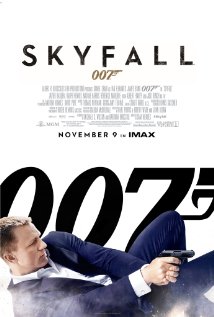
The five nominated movies this year are Anna Karenina, Django Unchained, Life of Pi, Lincoln and Skyfall. Not a single one of these choices is similar in content or even in cinematic style; the only common denominator is the tenacious way with which each film’s cinematographer attempted to portray their respective stories. Each is a masterpiece in its own right, yet in the end,there can only be one director of photography who walks away with their own golden Oscar.
Anna Karenina takes a rather cold approach to the camera, emulating the frigid Russian expanse the film take place in, as well as the equally frigid relationship between Anna and Karenin. Sweeping tracking shots elegantly portray the environment and alluringly depict the fading glory of Czarist Russia. But the true attraction of the movie shines through with the juxtaposition of the impersonal far off shots with the very personal close-ups used when showing Anna’s budding romance with the young Russian cavalry officer. The intimacy of scenes surrounding the often sensual spectacle highlights the disparity between the relationships Anna is entangled in. As any good cinematographer knows, camera work is meant to accentuate a film, not merely depict it.
Where Anna Karenina’s cinematography is about emphasizing the human intrigue and drama of Russian society, Django Unchained focuses on something quite different. There’s no doubt that both are beautiful films, but Django’s spotlight is less about artistically painting the tapestry of the plot and more about detailing the various pieces of excitement that occur throughout the movie. The film is punctuated with action in a manner similar to how second-grade students use commas—every few seconds, and often with little to no set-up. But the cinematography of such scenes adds not only an emotional impact to the film; it successfully immerses viewers in Django’s world. There’s a sense of hyperrealism throughout that is accomplished by integrating the types of shots that Tarantino is known for: gritty, up close, and strikingly visceral.
Life of Pi, however, takes a far more surreal approach to the cinematic medium. While the cinematography of both Anna Karenina and Django Unchained focused on emphasizing something, whether it was love, politics, or bloody guts and glory, Life of Pi is about a much more introspective subject. The tracking shot is used once again, but it is now used to emphasize the isolation of Piscine amongst the wild watery waves that may become his grave. Yet it also shows the serenity of the ocean, the lack of animalistic violence that is all too ubiquitous upon the land. Life of Pi is a look into the primordial sides of man and its conflict with civility. The cinematography often reinforces this message. The rule of threes is effectively used with the hyena, the tiger, and the boy on the boat. It essentially provided contrast between the savagery of the hyena and the regal bearing of the tiger—the two forces within Piscine, and within every human, that compete for dominance.
Lincoln’s Janusz Kaminski performed wonderfully with his film, earning it a place among the Oscar nominees, as all the other cinematographers did. But the story that Lincoln presented had to be presented in a very precise and sober manner, as befits its content matter. The cinematography mirrors this intent—there are very few moments of the film that feel unplanned, every shot seems perfectly placed for the actions of the scene. Where the other nominees’ cinematographers sought to enhance the movies with their cinematic technique, it seems as if Kaminski merely lends his cinematography as a tool to director Steven Spielberg in order to better tell the story. Often times, there is nothing more exciting than still jump cuts between the faces of those involved in a conversation. Yet sometimes, that’s all that is needed. The poignancy of the moments and the severity of the decisions can be easily felt. It feels as if Kaminski opened a window into Lincoln’s world—a truly rare gift.
Now, however skilled all the other nominees’ cinematographers were, Skyfall’s Roger Deakins truly outdid himself. From the opening shots of the film, following Bond through city streets, tunnels, and even the top of a train itself, Skyfall sets itself up as the film to be beat. The new installment in the Bond series marked the end of an era. The decisions made regarding the camera techniques utilized in the film made the guffaws turn to belly laughs and made the emotional blows hit that much harder. Slow motion videography during gun fights, dual shots intensifying the confrontations between Bond and Silva, wide angles, low angles, and high angles all used to properly establish the hierarchy and superiority of the characters—a whole ensemble of cinematic technique is amalgamated together to present a truly well put together and enjoyable experience.
Often times, the presentation of the plot is just as important as the message of the film. Anna Karenina and Lincoln both performed splendidly in this regard. Cinematography can also be used to showcase the frenzy of activity and visual stimulation, as Django Unchained did. Few films manage to combine these two aspects together, yet this year; it seems that both Life of Pi and Skyfall manage to do so. However, Life of Pi relies far too much upon VFX to create their shots—there was no true challenge in the creation of the movie as far as cinematography is concerned. But Skyfall… Skyfall is another beast entirely. Every scene is shot with the intention to both strengthen the plot and accent the action, a one-two punch combination that is guaranteed to please.
By Raj Satpathy
[/tab][tab title=”Best Costume Design”]
[heading style=”1″]Best Costume Design[/heading]
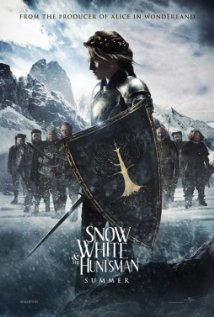
Take Steven Spielberg’s Lincoln; its costuming was fairly straightforward, almost a hardly noticeable background. The quiet suits of the senators and dresses of their wives, the army uniforms in various states from precise to rumpled, the costumes in this movie nicely set the mid-1800’s scene and got out of the way nicely for a predominantly dialogue-based film. In other words, unspectacular, but created the mood and not much else.
Anna Karenina, Joe Wright’s direction of the Tolstoy novel, also falls under this blanket; Anna herself had some gorgeous dresses, and I really liked Count Vronsky’s wardrobe as well, but the costuming as a whole was uninspiring. The clothes were indeed well done, but I was less than blown away by the entire effect. This could easily serve a purpose of highlighting individual characters over the background cast, but I would still prefer dress that does more than serve a purpose; something at least a little more interesting for the non-leads.
I’d also dismiss the costuming for Rupert Sanders’ Snow White and the Huntsman to this same mold as just another example of classic modern fantasy wear but for one thing: the armor. My goodness, the plate armor and helmets of the troops in this film were so absolutely stunning, they make up for the fact that everyone else looked mind-bogglingly boring. Call me a sucker for shiny metal, but it put this film on par with Anna Karenina.
One step above the mediocrity of the previous three films were those with legitimately interesting costumes throughout.
The costuming for Mirror Mirror, Tarsem Singh’s version of the Snow White fairy tale, was absolutely adorable. Although a tad ostentatious at times, the outsize dresses and silly individual accents to the dwarves’ jumpers made this remake a visual joy to behold. And, I might add, blew the other Grimm remake out of the water.
As nicely as Mirror Mirror represented itself, however, there is still a clear Oscar winner in this category: a picture with costuming that was not only nice and interesting but stunning, spectacular and just downright amazing.
Les Miserables in the hands of Tom Hooper was definitely this winner. Musicals are known for their extravagant costuming, and in this Les Mis has certainly pulled inspiration from its roots in the West End and Broadway. From the rebels to the Inspector Javert, from the poor of the streets to the wealth of the aristocracy, every group has its own distinct, intricate appearance.
This Oscar should, deservingly, go to Les Miserables.
By Asa Lory
[/tab][tab title=”Best Supporting Actor/Actress”] [heading style=”1″]Best Supporting Actor/Actress[/heading]

This year, the nominees for Best Supporting Actor are Christopher Waltz for Django Unchained, Robert de Niro for Silver Linings Playbook, Alan Arkin for Argo, Phillip Seymour Hoffman for The Master and Tommy Lee Jones for Lincoln.
After his win last year it’s unlikely that Christopher Waltz will win due to the Academy’s well documented bias against those who have already won. But he still deserves it, if just to symbolically win for Samuel L. Jackson and Leonardo DiCaprio, NEITHER OF WHOM HAVE AN OSCAR. Also Waltz played a fantastic and poignant turn in Django Unchained as the moral German bounty hunter King Schultz, a mirror reflection of Hans Landa, and delivered my favorite line in the movie: “I just couldn’t resist.”
Robert De Niro was one of the key reasons why I enjoyed Silver Linings Playbook as much as I did, as he reminded me of my maternal grandfather Heaney. His simple repetitions of speech and oddities of habit reflect real life “grandfatherliness,” which is to say, not your typical ‘wise old man’ or ‘silly old man.’ He’s a man that’s old. And De Niro played him beautifully. The chemistry between De Niro and Cooper was also amazing for anyone who has witnessed that type of relationship.
Alan Arkin played a movie producer and agent in Ben Affleck’s Argo and seemed to be the only person who realized how ridiculous the whole idea was. In the end, however, he played a great down to earth character against the idealistic Affleck. But I don’t think he’ll win, mostly because the competition is too superb.
Phillip Seymour Hoffman played Dodd, the deliberate and intelligent snake-oil salesman opposite Joaquin Phoenix’s violent firebrand.Although he is a fraud in the end, Hoffman keeps the character well out of sleaze-ville, presenting him as articulate, well read, and generous. While Phoenix is the heart of the film, Hoffman’s dynamic portrayal create fascinating glimpses into the doublethink at the center of a cult.
Tommy Lee Jones played an excellent Thaddeus Stevens in Lincoln, but I have to wonder how much is reflected from the probable best actor winner, Daniel Day Lewis. To be sure, Jones gave a great speech at the climax of the film and made the most of his character, but it didn’t really have the depth of Silver Linings Playbook or Django Unchained. However, the Academy loves grand histories, so he’s got a shot.
Overall, the Oscar will most likely go to Robert De Niro. He gave a powerful and engaging performance as Bradley Cooper’s slightly loony father, and the critically acclaimed actor has not been nominated for an Oscar since 1992. The Academy will be itching to give De Niro the credit and prestige he deserves.
On the other side of things, the ladies of the film industry have also given a wide variety of excellent supporting performances this year. 2013’s nominees for Best Supporting Actress are Amy Adams for The Master, Sally Field for Lincoln, Helen Hunt for The Sessions, Anne Hathaway for Les Miserables and Jacki Weaver for Silver Linings Playbook.
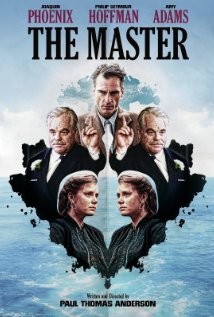
Sally Field took on the exquisite challenge of playing Mary Todd Lincoln. Famously difficult, Mary Todd is somewhat rehabilitated in Spielberg’s Lincoln, and a lot of that has to do with Field’s well-structured performance. As the other powerhouse female lead in a historical drama, though, I doubt she can topple Hathaway’s Fantine.
Helen Hunt plays an amazing character in The Sessions. She’s a sex therapist for John Hawke’s polio disabled lovelorn Mark O’Brien. In this capacity she seems to be perfectly comfortable, overcoming the requisite rough start and having this simple comfort in her own body reflective of the movie’s frank depictions of sex and nakedness. She’s an adult in a world that in movies, at least, is usually treated with a teenager’s furtive hand.
If anyone’s the shoe-in for the Oscar this year, though, it’s Hathaway, and deservedly. Though her part in Les Miserables was small – Fantine only appears in the first third or so of the movie – it was undoubtedly the film’s best performance, followed by Eddie Redmayne as Marius. In any case, her rendition of ‘I Dreamed A Dream’ was beautiful and heartbreaking, and I would argue that that alone should secure her the Oscar. Plus, her commitment to the role was outstanding.
But I can’t forget Jacki Weaver. You’d think that at least one of the primary players in Silver Linings Playbook would be weaker than the others but it’s just not the case. It’s one of those movies that just has the combination of perfect casting, great writing and spectacular acting. Jacki Weaver played Bradley Cooper’s mother and similar to De Niro, playing the father, she was spot on as a woman of that age. There are some movies — the beginning of 2011’s Win Win comes to mind — that encapsulate daily life perfectly in a group of scenes. Most movies never really get lifelike; the still have that screeny gloss to them. Thanks to Jacki Weaver, Silver Linings Playbook crossed that threshold.
Jacki Weaver could definitely sneak up and grab the Oscar, surprising critics that mostly believe Hathaway will be the winner. But that’s unlikely; Hathaway truly blew the audience away. Her emotion was as raw and real as it gets, and that’s what good acting is all about.
By Adam Schoelz
[/tab][tab title=”Best Actor/Actress”] [heading style=”1″]Best Actor/Actress[/heading]

This year’s nominees for best actor are Daniel Day Lewis for Lincoln, Hugh Jackman for Les Miserables, Bradley Cooper for Silver Linings Playbook, Joaquin Phoenix for The Master and Denzel Washington for Flight. All five actors put on powerful performances, but only one can take home the Oscar.
Daniel Day Lewis’ performance as President Lincoln was breathtaking. When watching a movie, the audience usually sees an actor playing a part. The audience often refers to the character by the actor’s name. But with Daniel Day Lewis, he wasn’t Daniel Day Lewis; he was Lincoln. The method actor became the famous president. From the supposed high-pitched voice of Lincoln and the posture that comes from a tall, old, lanky man, every single breath was believeable.
Les Miserables is one of the most emotionally raw movies to date. Hugh Jackman, as the leading man, had a lot to do with that. Every song he sang, which was a lot (as there were virtually no words in the film), was sung live; you could hear the pain, love or sorrow in his voice in addition to see it radiate from his face.
Bradley Cooper, most well known for his character in The Hangover, gives an honest performance as a man trying to overcome his psychological disorders. It’s one thing to show utter frustration on the screen, but it’s another to show a man fighting the frustration brought on by himself. Cooper not only became his character; he helped put a new light on psychological disorders.
Joaquin Phoenix, perhaps best known for his Oscar-nominated performance as Johnny Cash in 2005, returns to the screen after a nearly two year break, his last credit, I’m Still Here, documenting his transformation from an actor to a rapper. In The Master, Phoenix plays a Naval veteran returning home and trying to figure out what to do the with rest of his life.
In Flight, Denzel Washington plays Whip Whitaker, a pilot who amazingly saves a plane full of passengers, but his heroism is overshadowed when it is discovered he was under the influence. Washington has won two Oscars, one in 2002 for Training Day and the other in 1989 for Glory, out of the five he has been nominated for prior to this year.
However, out of all these actors, Daniel Day Lewis has showed the greatest acting prowess. His delivery of dialogue is sharp and emotional, while his facial expressions are heartbreaking, allowing the audience to see right through him to the core of the presidency. An actor who can tell a story that well, with that much emotion, certainly deserves the Oscar.
Along with the nominees for Best Actor, the potential winners for Best Actress are Jessica Chastain for Zero Dark Thirty, Jennifer Lawrence for Silver Linings Playbook, Quvenzhane Wallis for Beasts of the Southern Wild, Emmanuelle Riva for Amour and Naomi Watts for The Impossible.

Jennifer Lawrence, the 22-year-old Hunger Games star, gives a riveting performance as Tiffany, a young widowed woman struggling to figure out how to live her life. Seeing moments of craziness balanced with words of genius, Lawrence lets the audience inside Tiffany’s brain and struggle along with Tiffany to see what she should do with her life.
Quvenzhané Wallis, the youngest Best Actress in a Leading Role Oscar nominee to date, made her acting debut in Beasts of the Southern Wild. As a little girl living with her father in a place the inhabitants call the “Bathtub,” nine-year-old Wallis is incredible to behold.
The oldest woman to ever be nominated for Best Actress in a Leading Role, Emmanuelle Riva plays an elderly woman named Anne. After unseen events unfold, her marriage – both her and her husband in their eighties – is tested. Watching Riva’s performance is awe-inspiring, as she reminds the audience of the pain and beauty of love.
In The Impossible, Naomi Watts plays a mother searching for her husband and two children after a devastating storm that tore the family apart. Watts, who was nominated for Best Actress in 2003 for the film 21 Grams, snagged the only nomination for the film. Her performance was gruesome and powerful, portraying the exquisite pain of injury, and the hope that allowed the family to survive.
However, of all the nominees, Jennifer Lawrence is most likely to take home the award. Her ability to turn a mentally-disturbed young woman like Tiffany into a charming, loveable and relatable character is what makes her a phenomenal actress. Without any doubt, she should be this year’s winner.
By Maddie Magruder
[/tab][tab title=”Best Picture”] [heading style=”1″]Best Picture[/heading]
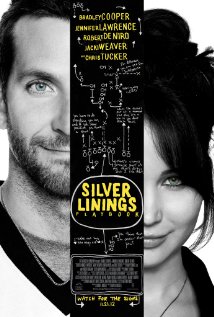
The Oscar nominees for Best Picture of 2013 boast a selection of films praised individually by critics and audiences alike. This year the nine nominees include: Amour, Life of Pi, Argo, Lincoln, Beasts of the Southern Wild, Silver Linings Playbook, Django Unchained, Zero Dark Thirty and Les Miserables.
Life of Pi is a drama/adventure film following the story of a young Indian male named Pi, who while riding on a ship carrying his family and its zoo to North America, encounters a massive storm, sinking the ship along with all of the crew and animals, leaving Pi stranded on a lifeboat in the Pacific Ocean. However, Pi is not alone. A full-grown Bengal tiger survives and winds up along with Pi on the lifeboat, forcing Pi to not only survive starvation, potential drowning and dehydration, but also an hungry tiger on a small boat. Life of Pi uses marvelous 3-D effects to bring animated animals almost to live-action and creates stunning scenes of raging storms and a massive ocean. Life of Pi also brings more to the table with a heart-tugging story, a great sense of suspense and a powerful theme of hope throughout the movie.
Beasts of the Southern Wild is an independent film set in a small island south of Louisiana, called ‘The Bathtub’ and is almost entirely isolated from the rest of the U.S. The story is centered around a young girl named Hushpuppy, who lives with her father and the other residents of the Bathtub. The film documents her relationships and and her battle to survive Hurricane Katrina. The plot appears simple, but involves incredibly fresh characters in a realistic setting not often considered. Quvenzhané Wallis’ role as Hushpuppy is fantastic, as she has all of the interests, simplicity and quirks of a seven-year-old, but is hardened by her rough lifestyle of poverty and a poor father. Along with the cast and story is a great atmosphere of determination and rebellion that stands out from many movies in its genre.
Lincoln follows the President Abraham Lincoln during the end of the Civil War and his efforts to abolish slavery entirely from the U.S. while facing opposition from Congress and struggling to gain supporters in his endeavor. Lincoln does a great job of capturing the tension and enormous risk of failure throughout the film, and while it isn’t chock-full of action, the film tastefully creates suspense in its own way.
Django Unchained follows the tale of an ex-slave, who forms a team with a german bounty hunter who seeks redemption for his mistakes by helping the ex-slave rescue his wife from slavery. Tarantino’s wonderful sense of dark humor is still upheld in this movie, along with his films’ consistency of well-choreographed fight scenes, well-written dialogue and classic wit. However, the movie doesn’t go without serious tones, as it encompasses heavy moral values like the worth of a human’s life and camaraderie.
Silver Linings Playbook is a dramatic portrayal of former teacher Pat Solitano who is recently released from a mental hospital for severely beating a man cheating with his wife. He later meets a young woman named Tiffany with an anger struggle similar to Pat’s. Tiffany, although infatuated with Pat, helps Pat to mend his relationship with his wife, but eventually falls in love with her also. The film is full of unique quirky characters that, while in odd situations, are very relatable to the audience.
Amour is a drama/romance film with very dark themes, as the movie manifests a typical story into a detailed and deep plot filled with strong emotions of hope, love, salvation and tragedy. The story consists of an old married couple of retired musicians with a daughter who lives further away with her family, but is still deeply involved with her parents. One day, the wife suffers a stroke leading to severe paralysis and an addled mind, but she continues to decay as the days go on. This is a story that all watching can relate to, as the agony of helplessly watching a loved one suffer is perfectly captured creating horrifying, heart-wrenching moments for any who watch.
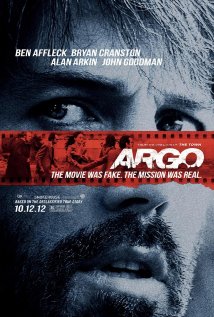
Zero Dark Thirty depicts the struggle of the U.S. to find Al-Qaeda leader Osama-Bin Laden after the 9/11 terrorist attack on the World Trade Center in New York City. The film does a job well done in painting a picture of the enormity of the operation carried out, and the tenacity of how the manhunt is performed to find just one man. The film also does well in not pasting itself as overly patriotic and patronizing, as it mostly focuses on the intensity and drive put into finding a man responsible for much death and strife.
Les Miserables is about Jean Valjean, a man in early 19th century France who seeks to start his life anew after illegally breaking his parole from his imprisonment of stealing a loaf of bread years ago. This story however, is told with a very unique twist, as it is told as if it were a played in a theatre. While a difficult way to depict a story in a movie, Les Miserables pulls it off spectacularly as it not only shows a tale filled deeply with desperation, hope and salvation, but accompanies it with a masterful musical score to give storytelling not often seen in live-action movies.
While there’s been much debate as to which film is the best, most critics are agreeing that Argo will take home the award for Best Picture. Having already snagged the Golden Globe for the title, the film is in an excellent position to win once again. And it makes sense. Ben Affleck does an amazing job of conveying the sense of urgency and drama that accompanied the ‘Argo’ scheme, while also maintaining the political facts that make this event so prominent in history.
In my opinion, Silver Linings Playbook should be the winner, as it has the most charming story and a full cast of well-acted and well-rounded characters. However, Argo will almost certainly be the winner, as the Academy has always been a sucker for well-done historical films.
By Blake Becker
[/tab][/tabgroup]













































































